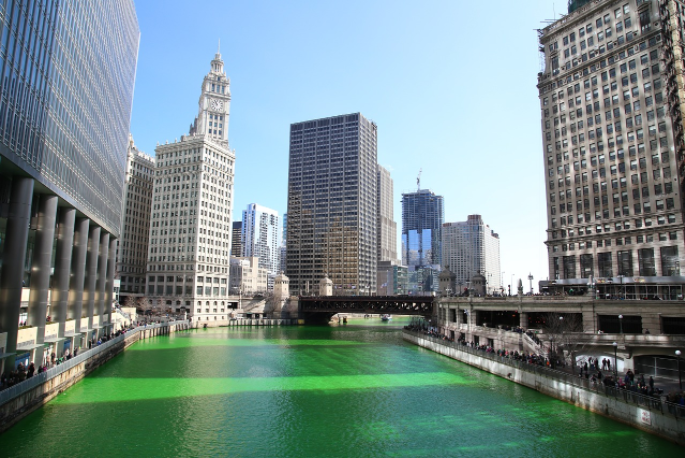What would Chief O’Neill have made of some of the more outrageous aspects of modern Saint Patrick’s day?
I remember, as a teenager in the 1980s, visiting downtown Chicago to see the parade and the river turned bright green. The pageantry and excess was very different from the solemn religious holiday I grew up with in Ireland. The practice of dying the river green dates from 1962:
The inspiration for the stunt came from pollution-control workers, who used various chemical dyes to trace illegal sewage discharges. The first year, the city dumped 100 pounds of dye into the river, which left it green for an entire week.
The Origins of Chicago’s Green River, Smithsonian Magazine
As to the question of what the chief might have thought of some of the more over-the-top expressions of Irishness, he is very clear in Irish Folk Music: A Fascinating Hobby when he deplores this kind of “commercialization” which:
… betrays a sordid human frailty from which the Irish are by no means exempt. Such trivial devices as green ink, delusive letterheads and whimsical stationery can never be as effective in arousing national sentiment or advancing the interests of a cause as unselfishness, co-operation and singleness of purpose.
Irish Folk Music: A Fascinating Hobby [O’Neill, pg. 61]
Imagine the chief’s reaction to a river of green ink!
These expressions of Irishness came from the historical context of a minority expressing their identity. If you are going to be mocked for something, might as well be as loud about it as possible. O’Neill was also driven by a need to celebrate but the tunes he collected were a more moderate and authentic form than green rivers and “Kiss Me I’m Irish” t-shirts.
To conclude, here is a tune from the O’Neill collection that will be played in many Irish dancing competitions (feiseanna) around this time: Saint Patrick’s Day.
